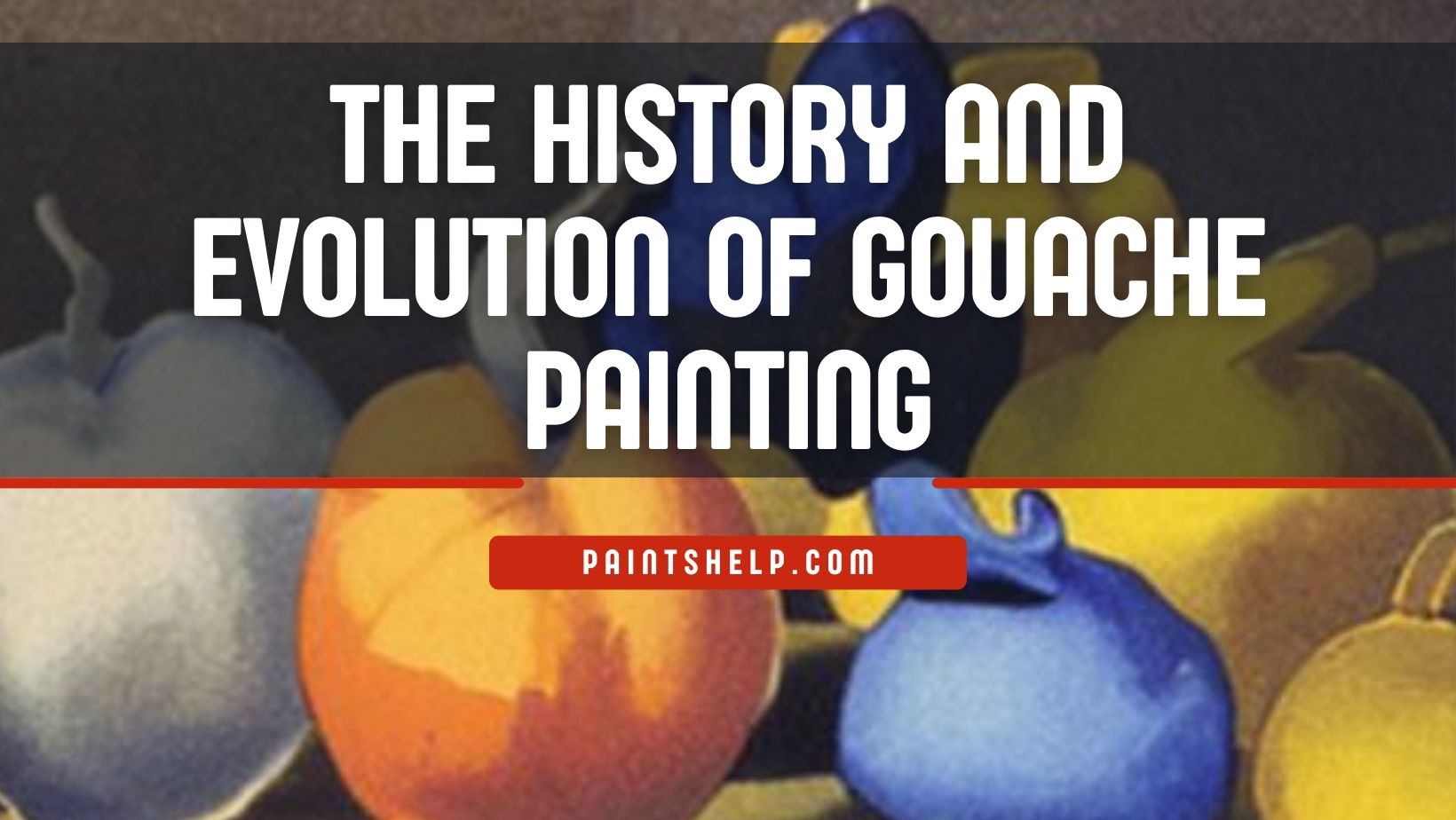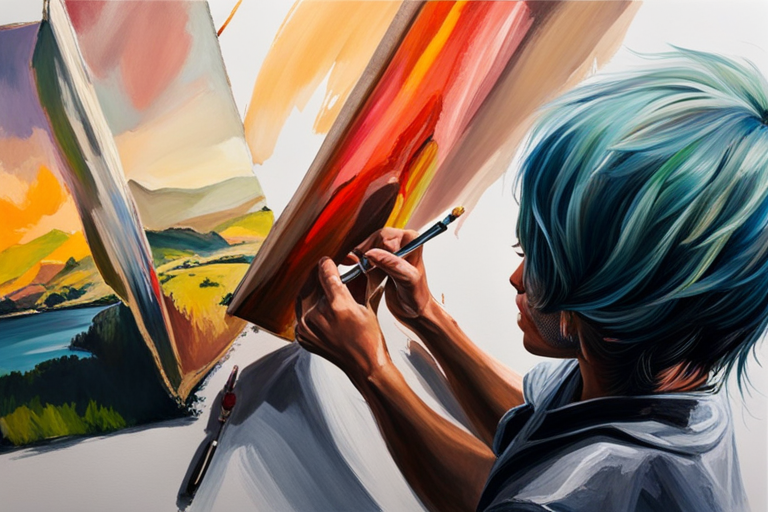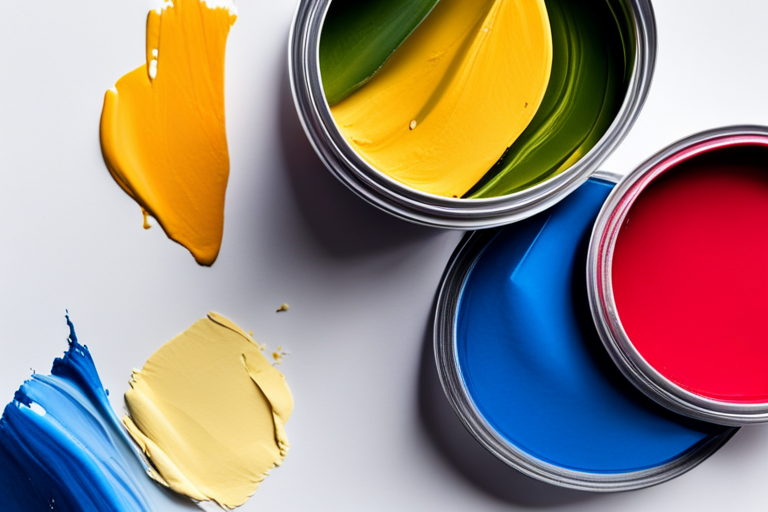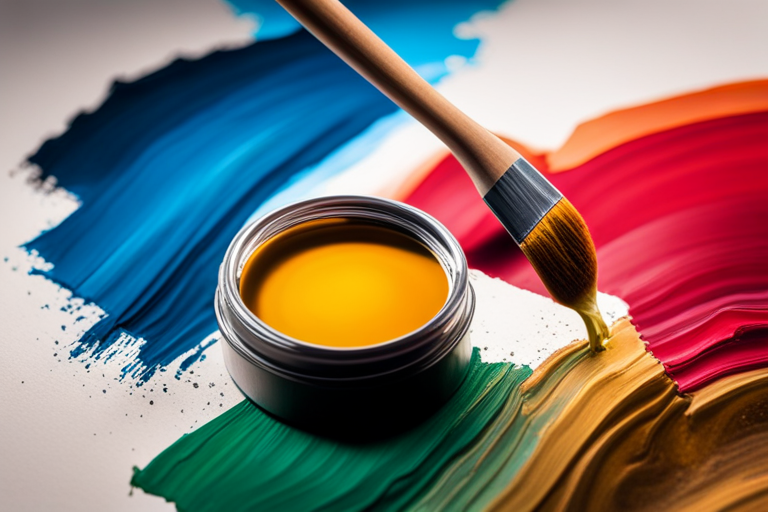Gouache painting is a medium that has been used by artists for centuries, but its history and evolution are not as well-known as those of other mediums like oil or watercolor.
This blog post aims to provide a comprehensive overview of the development of gouache painting from its origins in the 16th century to its contemporary uses today. By examining historical moments such as the Golden Age of Gouache and the rise of Impressionism, we can trace the medium’s significant contributions to art history.
In addition, exploring the different contexts in which gouache is used today sheds light on its versatility and enduring appeal. Whether you are an artist looking to experiment with new mediums or simply interested in learning more about art history, this post is sure to offer valuable insights. Understanding the history and evolution of gouache painting can offer a deeper appreciation for the medium and its continued relevance in the art world.
Gouache painting is a special type of painting that has become increasingly popular over the years. It flourished during the 16th century when artists fascinated with the medium started using it. Initially known as “body color,” gouache painting was introduced to Europe from the Middle East through trade routes. Its origins can be traced back to the ancient civilizations of Egypt and Greece. Over time, gouache painting has evolved and gained more recognition worldwide, with many artists finding it a versatile painting medium.
During the Renaissance, many famous painters such as Leonardo da Vinci Michelangelo started using gouache painting. They found that its opaque quality helped them create fantastic artwork that no other media could have done. Gouache paint is made from pigment, water, and a binder like gum Arabic, which sticks the pigment to the paper or canvas. This makes it possible to work over any colors painted previously. The result is vibrant and true hues that stand out on the painting surface.
Today, gouache painting has continued to develop with new and improved formulas that are readily available. Artists love it for its versatility and unique texture, which create an almost three-dimensional effect. It can be used alone or in combination with other media such as watercolor and acrylic paints.
With time, gouache painting has gained worldwide recognition and is becoming an increasingly popular choice among artists. For those looking for a medium that offers an array of possibilities, gouache painting is the perfect choice.
Early Adopters of Gouache: Exploring the artists who first experimented with the Medium

Gouache is a medium that has been in use for centuries, and over time, it has evolved in different ways. Early adopters of gouache have been essential in shaping the medium as we know it today. These artists explored the potential of gouache painting and were able to create masterpieces that continue to inspire artists worldwide.
One of the early adopters of gouache painting was Francisco de Zurbarán, a 17th-century Spanish artist known for his use of vibrant colors. Zurbarán’s use of gouache in his paintings allowed him to achieve rich colors and precise details in his works of art. Another great artist who experimented with gouache was William Blake, an English poet, painter, and printmaker, who used gouache to create beautiful and intricate illustrations in his books.
As the use of gouache evolved, new artists emerged who pushed the boundaries of the medium. Henri Matisse, a French artist, was known for his use of gouache painting in his later works. His vibrant and colorful paintings were a result of his experimentation with the medium. Similarly, Paul Klee, a German-Swiss artist, used gouache in his paintings to create abstract and imaginative works of art.
The history and evolution of gouache painting have been shaped by artists who dared to experiment with the medium. From early adopters such as Francisco de Zurbarán William Blake to modern artists such as Henri Matisse Paul Klee, gouache has been used to create breathtaking masterpieces that continue to inspire artists to this day.
The Golden Age of Gouache: How the painting technique developed in the 19th Century and its role in the Rise of Impressionism

If you’re a fan of painting, then you’ve probably heard of gouache. But did you know that this technique had a golden age in the 19th century? It’s true! During this time, artists fell in love with the opacity and vibrancy of gouache, leading to its widespread popularity and use in the art world.
One of the most significant roles of gouache in the 19th century was its contribution to the rise of Impressionism. The technique’s use of light and color made it perfect for capturing the fleeting moments of nature that the Impressionist movement sought to convey. Artists such as Claude Monet Camille Pissarro used gouache to create beautiful landscapes and scenes of city life that still capture our imaginations to this day.
But gouache didn’t stop there. As the art world evolved, so did the painting technique. Artists began experimenting with new color palettes and techniques, leading to the creation of even more stunning works of art. Today, gouache continues to be a beloved medium for artists of all skill levels, and its impact on the world of art is undeniable.
Whether you’re a seasoned painter or just getting started, gouache is a technique that’s worth exploring. So why not grab your paints and brushes and discover the beauty of this timeless art form for yourself?
Modern Gouache: Examining the Medium’s Resurgence in the 20th Century
Gouache is an ancient medium that has been used for painting for centuries. It is a water-based paint that gives a matte finish and can be used on a variety of surfaces. However, it was seen as an outdated medium for many years, until a resurgence in the 20th century brought it back to popularity.
Modern gouache has become a medium of choice for many contemporary artists due to its versatility, vibrant colors, and ease of use. The revival of gouache has allowed artists to experiment with different techniques and styles. It has become a favorite medium for illustrators and designers.
The opaque nature of gouache allows them to build up colors and create interesting textures that are not possible with other water-based mediums. Gouache can create a variety of effects, from thick and creamy to translucent and light.
The history and evolution of gouache painting are fascinating. Originally, gouache was used for illuminated manuscripts and miniatures in Europe. It was popular in Asia for Chinese and Japanese brush paintings. Even though it was not common in Western art until the 18th century, it became very popular in the 19th century with the rise of the watercolor movement. Through the years, the medium has gone through various changes, but its value has not diminished.
Modern gouache has taken the medium to a new level. It has become a viable alternative to more traditional mediums and has proven itself to be a versatile and vibrant option. The resurgence of gouache in the 20th century has not only allowed artists to experiment with new techniques, but it has also given them access to a medium with a rich history. The history and evolution of gouache painting is exciting and inspiring, and it offers something unique and valuable to the art world today.
Contemporary Uses: Analyzing the different contexts in which the medium is used today
Contemporary Uses: Analyzing the different contexts in which the medium is used today
Gouache painting has come a long way since it first appeared in the Middle Ages. Over the centuries, artists have used this versatile medium to create stunning works of art that have left a lasting impact on the art world. From its earliest uses in illuminated manuscripts to the contemporary works that we see today, gouache painting has remained relevant and popular.
Today, gouache painting is used in many different contexts, from traditional paintings to digital art. Some artists use gouache to create beautiful pieces of poster art, while others use it to add depth and texture to their digital creations. Gouache can also be used in mixed-media art, where it’s combined with other materials such as ink collages.
Read also: How to blend colors using Gouache Paint?
The versatility of gouache painting means that there is really no limit to the creative possibilities it offers. Artists can experiment and innovate with different techniques to create unique, one-of-a-kind pieces of art. Whether it’s an intricate illustration or a bold and vibrant poster, gouache painting continues to inspire and captivate artists around the world.
I believe that gouache painting has a long and rich history, and it certainly has a bright future. As artists continue to explore and push the boundaries of this fascinating medium, we can be sure that we’ll see even more stunning and groundbreaking works of art in the years to come.
Future of Gouache: Speculating on the potential of the painting technique in the future
The future of gouache is a topic of great interest to art lovers and professionals alike. Gouache has a long history of being used for its vibrant colors and opaque properties. However, as technology and materials progress, the potential of gouache is expanding beyond what we once thought possible.
One exciting possibility is the combination of traditional gouache with digital art tools. Many artists are already exploring these possibilities. By using gouache as a base for digital painting, artists can create unique, layered works with the best of both worlds. This opens up a new world of possibilities for creators that was once impossible.
Another way gouache is evolving is through the evolution of eco-friendly materials. Many paints are harmful to the environment, but environmentally safe gouache is making a stand in the art industry. This is fantastic news, as it means that artists can continue to create beautiful works whilst keeping the planet safe.
There is a bright future for gouache, and there are many possibilities in store for it. As technology advances and eco-friendly materials become more readily available, gouache will be able to evolve and expand into areas we never thought possible. Art lovers can start looking forward to even more vibrant and innovative works from their favorite artists.
Wrapping Up
The evolution and history of gouache painting show its beauty and versatility, highlighting its fascination with the field. Having originated as a watercolor that was opaque, gouache painting has come a long way from its humble beginnings to its current status as a favorite among contemporary artists.
Whether you are a professional artist or just someone who appreciates the beauty of art, understanding the history and evolution of gouache will help you appreciate the art form even more. So next time you come across a stunning gouache painting, take a moment to appreciate the rich history and evolution behind it.
Who knows, you might be inspired to try your hand at this incredible medium and create a masterpiece of your own.




Leave a Reply